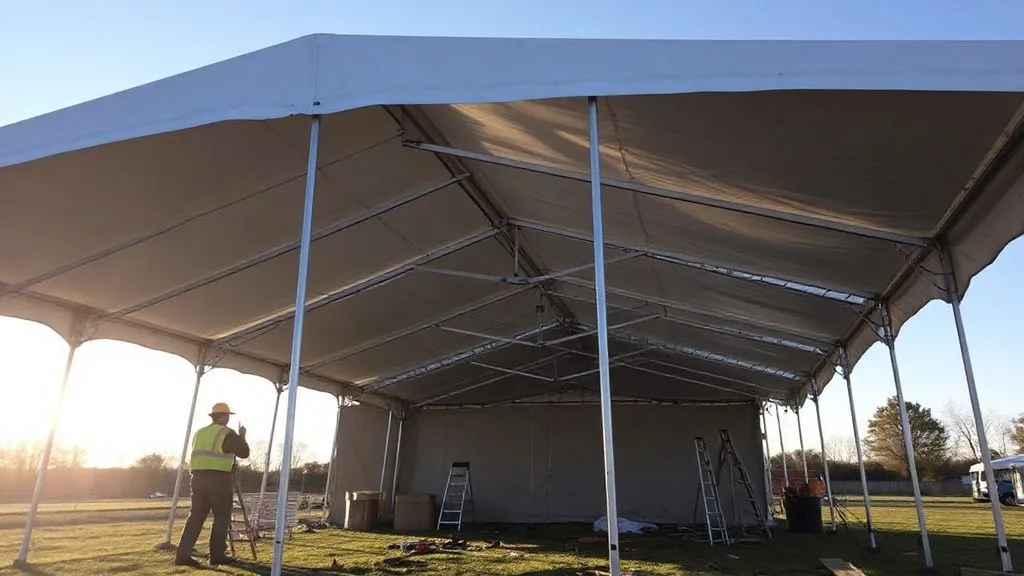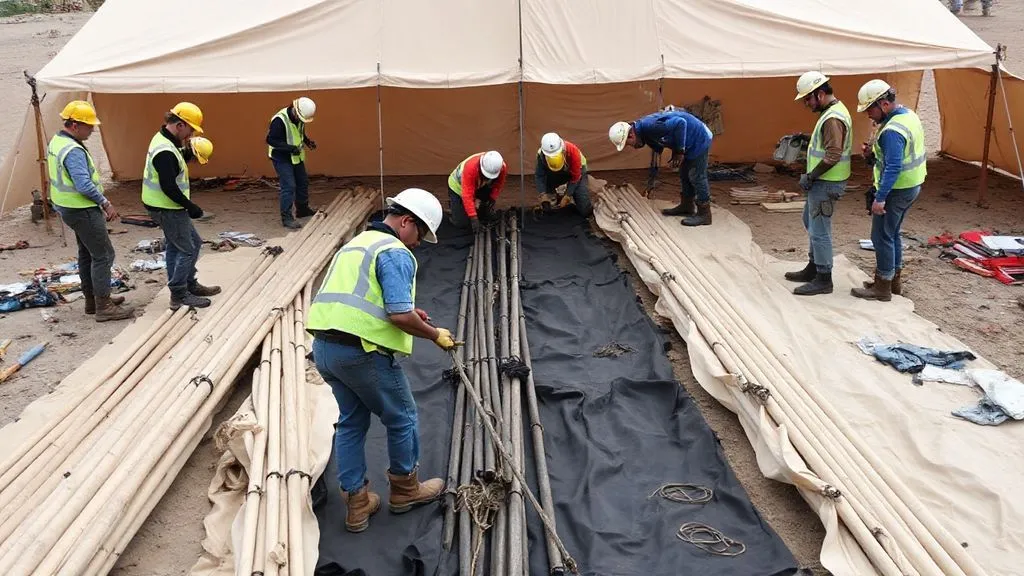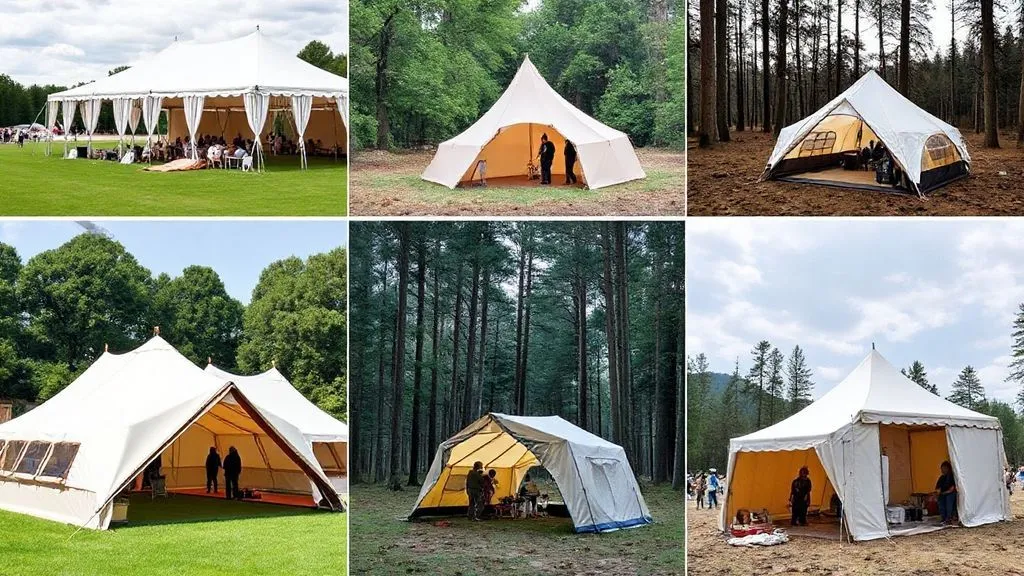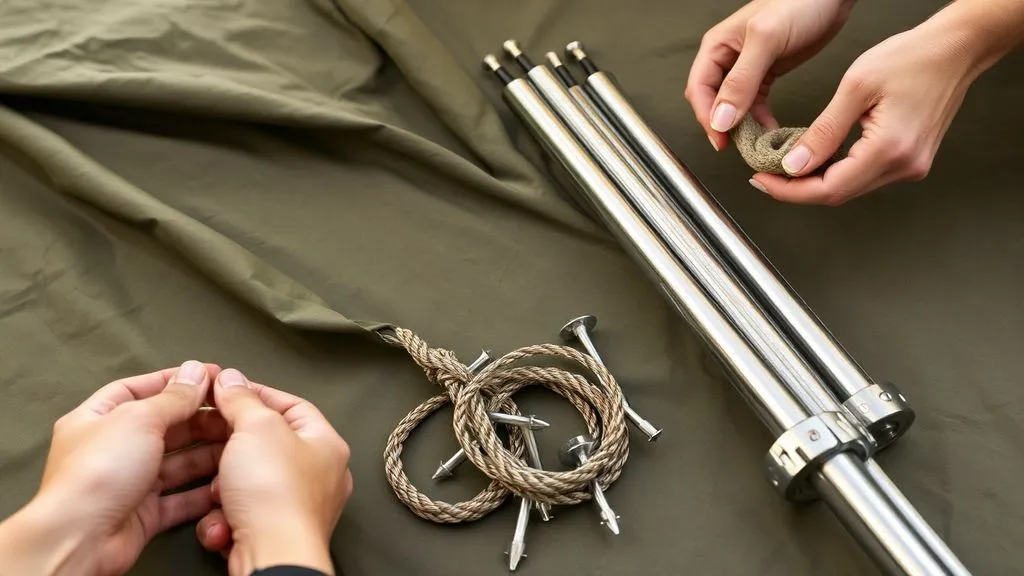Camping is a beloved outdoor activity that offers a chance to reconnect with nature, unwind from the daily grind, and create lasting memories. A key aspect of a successful camping trip is having a reliable shelter, and knowing how to set up a tent is an essential skill for any camper. In this comprehensive guide, we will explore the art of tent building, offering step-by-step instructions, maintenance tips, and insights into the best practices for setting up a tent. Whether you’re a seasoned camper or a first-timer, this guide will equip you with the knowledge needed to create a comfortable and secure shelter in the great outdoors.

Understanding Tent Building: An Overview
Tent building is not just about assembling poles and fabric; it’s about creating a temporary home that can withstand the elements and provide comfort. Tents come in various styles and sizes, from lightweight backpacking tents to spacious family tents. Regardless of the type, the basic principles of tent building remain consistent. This guide will cover everything from selecting the right tent to mastering the setup process.
Why Tent Building Matters
- Protection from Elements: A well-pitched tent provides shelter from rain, wind, and sun, ensuring a comfortable camping experience.
- Safety: Properly setting up a tent minimizes the risk of accidents, such as a tent collapsing in strong winds.
- Comfort: A correctly assembled tent offers a cozy space to relax and sleep, enhancing your overall camping adventure.

Choosing the Right Tent for Your Adventure
Before diving into the tent building process, it’s crucial to select a tent that suits your specific needs. Consider the following factors:
- Type of Camping: Are you backpacking, car camping, or embarking on a family trip? Each type requires a different tent style.
- Weather Conditions: Consider the climate and terrain of your camping location. Opt for a tent with appropriate weather resistance features.
- Size and Capacity: Determine how many people will be using the tent and choose a size that provides ample space for sleeping and storing gear.
- Ease of Setup: Some tents are designed for quick and easy assembly, while others may require more time and effort.

Step-by-Step Guide to Building a Tent
Step 1: Selecting the Ideal Campsite
- Flat and Level Ground: Choose a flat area to ensure a comfortable sleeping surface and stable tent setup.
- Clear of Debris: Remove rocks, branches, and other debris that could damage the tent floor or cause discomfort.
- Avoid Low Areas: Steer clear of depressions that could collect water in case of rain.
Step 2: Laying the Foundation
- Ground Cloth: Lay a ground cloth or tarp to protect the tent floor from moisture and abrasion. Ensure it is slightly smaller than the tent base to prevent water pooling.
- Orientation: Decide the orientation of your tent entrance based on wind direction and desired view.
Step 3: Assembling the Tent Structure
- Unpack and Organize: Lay out all tent components, including poles, stakes, and rainfly, for easy access.
- Connect Tent Poles: Assemble the poles by connecting the segments, usually guided by color coding or numbering.
- Insert Poles into Sleeves or Clips: Slide the poles through the tent’s sleeves or attach them to clips, depending on the tent design.
Step 4: Raising the Tent
- Secure the Tent Base: Stake down the tent corners, pulling the tent taut to ensure stability.
- Erect the Tent: Gently lift the tent by raising the poles, securing them in place with pole pockets or fasteners.
- Adjust and Tighten: Ensure the tent fabric is evenly stretched, adjusting stakes and guylines as needed.
Step 5: Adding the Rainfly
- Position the Rainfly: Drape the rainfly over the tent, aligning it with the tent doors and windows.
- Secure the Rainfly: Attach the rainfly to the tent using buckles, clips, or Velcro, and stake out the guylines for added stability.
Step 6: Final Adjustments
- Check Stability: Ensure all stakes and guylines are secure, and the tent is stable against wind and weather.
- Organize the Interior: Arrange sleeping bags, gear, and personal items inside the tent for a tidy and comfortable space.

Tent Maintenance Tips for Longevity
Proper maintenance is key to extending the life of your tent and ensuring it performs optimally on every camping trip. Follow these maintenance tips:
- Air Dry After Use: Always air dry your tent before packing it away to prevent mold and mildew growth.
- Clean Regularly: Wipe down the tent fabric and poles with a damp cloth to remove dirt and debris.
- Store Properly: Store your tent in a cool, dry place, and avoid prolonged exposure to sunlight, which can degrade the fabric.
- Inspect for Damage: Regularly check for tears, broken zippers, or damaged poles, and repair them promptly.

Conclusion: Mastering the Art of Tent Building
Tent building is an essential skill for any outdoor enthusiast. By following the steps outlined in this guide, you can confidently set up a tent that provides comfort and protection during your camping adventures. Remember, practice makes perfect, so consider doing a trial run at home before heading out into the wilderness. With the right tent and proper setup techniques, you’ll be well-prepared to enjoy the beauty of nature while staying safe and comfortable.

